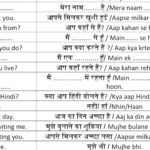The Therapeutic and Healing Power of Indian Music
Indian music, with its deep roots and rich traditions, is not just a source of entertainment but also a powerful tool for healing and well-being. For centuries, the therapeutic and healing power of Indian music has been recognized and utilized to promote mental, emotional, and physical health. This article explores the various ways in which Indian music contributes to wellness, the science behind its therapeutic effects, and how it is practiced today.
1. The Foundations of Healing in Indian Music
**1. **The Role of Raagas in Healing
Overview: Raagas, the melodic frameworks in Indian classical music, are believed to have specific healing properties that can influence the mind and body.
Key Concepts:
- Emotional Resonance: Different raagas are associated with specific emotions and times of day, creating a profound impact on listeners.
- Therapeutic Effects: Certain raagas are used to alleviate stress, anxiety, depression, and insomnia.
Examples:
- Raag Yaman: Known for its calming and soothing effect, often played in the evening to relax the mind.
- Raag Bhairav: Believed to have a grounding and stabilizing effect, often played in the early morning.

**2. **The Science Behind Sound Healing
Overview: The therapeutic effects of Indian music are supported by scientific studies that highlight the impact of sound on the brain and body.
Key Findings:
- Brainwave Entrainment: Indian music can influence brainwave patterns, promoting relaxation and mental clarity.
- Physiological Benefits: Music therapy has been shown to lower blood pressure, reduce heart rate, and decrease cortisol levels.
Examples:
- Music Therapy Research: Studies demonstrating the positive effects of music therapy on patients with chronic pain and mental health disorders.
- Neurological Studies: Research on how Indian classical music activates different areas of the brain associated with emotional regulation and cognitive function.
2. Traditional Practices of Music Therapy in India
**1. **Ayurveda and Music Therapy
Overview: Ayurveda, the ancient Indian system of medicine, incorporates music therapy as a complementary treatment for various ailments.
Key Practices:
- Dosha Balance: Music is used to balance the doshas (Vata, Pitta, and Kapha) in Ayurveda, promoting overall health and well-being.
- Healing Mantras: Chanting and listening to specific mantras are believed to have therapeutic effects on the mind and body.
Examples:
- Mantra Therapy: Use of mantras like “Om” and “Gayatri Mantra” for mental clarity and emotional balance.
- Music Prescriptions: Ayurvedic practitioners prescribing specific raagas for conditions like hypertension and digestive issues.
**2. **Nada Yoga: The Yoga of Sound
Overview: Nada Yoga, the yoga of sound, is an ancient practice that uses sound vibrations to enhance physical and spiritual well-being.
Key Concepts:
- Inner Sound: Practitioners focus on the inner sound (Nada) to achieve a meditative state and inner peace.
- Healing Vibrations: Use of vocal and instrumental sounds to balance energy centers (chakras) in the body.
Examples:
- Nada Meditation: Meditative practices focusing on sound vibrations to deepen meditation and promote healing.
- Sound Bathing: Immersive experiences using gongs, singing bowls, and other instruments to create a healing soundscape.
3. Contemporary Applications of Indian Music Therapy
**1. **Clinical Music Therapy
Overview: Modern music therapy incorporates Indian music to treat various medical and psychological conditions in clinical settings.
Key Applications:
- Mental Health: Use of Indian music therapy for conditions like depression, anxiety, PTSD, and autism.
- Pain Management: Music therapy to alleviate chronic pain and enhance the quality of life for patients with terminal illnesses.
Examples:
- Hospital Programs: Incorporation of Indian music therapy in hospitals and clinics for holistic patient care.
- Therapeutic Sessions: Guided music therapy sessions using Indian instruments like the sitar and tabla.
**2. **Wellness and Mindfulness Practices
Overview: Indian music is widely used in wellness and mindfulness practices to promote relaxation, stress reduction, and emotional well-being.
Key Practices:
- Meditation and Yoga: Incorporation of Indian music in meditation and yoga sessions to enhance focus and relaxation.
- Mindfulness Music: Use of soothing raagas and instrumental music for mindfulness practices and stress relief.
Examples:
- Yoga Classes: Use of Indian music to create a serene atmosphere in yoga studios and meditation centers.
- Mindfulness Apps: Integration of Indian music in apps and online platforms for guided meditation and relaxation.
4. Personal Stories and Testimonials
**1. **Healing Journeys with Indian Music
Overview: Personal stories and testimonials highlight the transformative power of Indian music in people’s lives.
Key Themes:
- Emotional Healing: Stories of individuals using Indian music to overcome emotional trauma and stress.
- Physical Recovery: Accounts of patients experiencing pain relief and improved health through music therapy.
Examples:
- Survivor Stories: Testimonials from cancer survivors and chronic pain patients who found solace in Indian music therapy.
- Musicians’ Tales: Experiences of musicians who use their art to heal themselves and others.
Conclusion
The therapeutic and healing power of Indian music is deeply rooted in its rich traditions and scientific foundations. From the ancient practices of Ayurveda and Nada Yoga to modern clinical applications and wellness practices, Indian music continues to offer profound benefits for mental, emotional, and physical health. As more people embrace the healing potential of music, Indian music therapy is poised to play an even greater role in promoting well-being and enriching lives.



